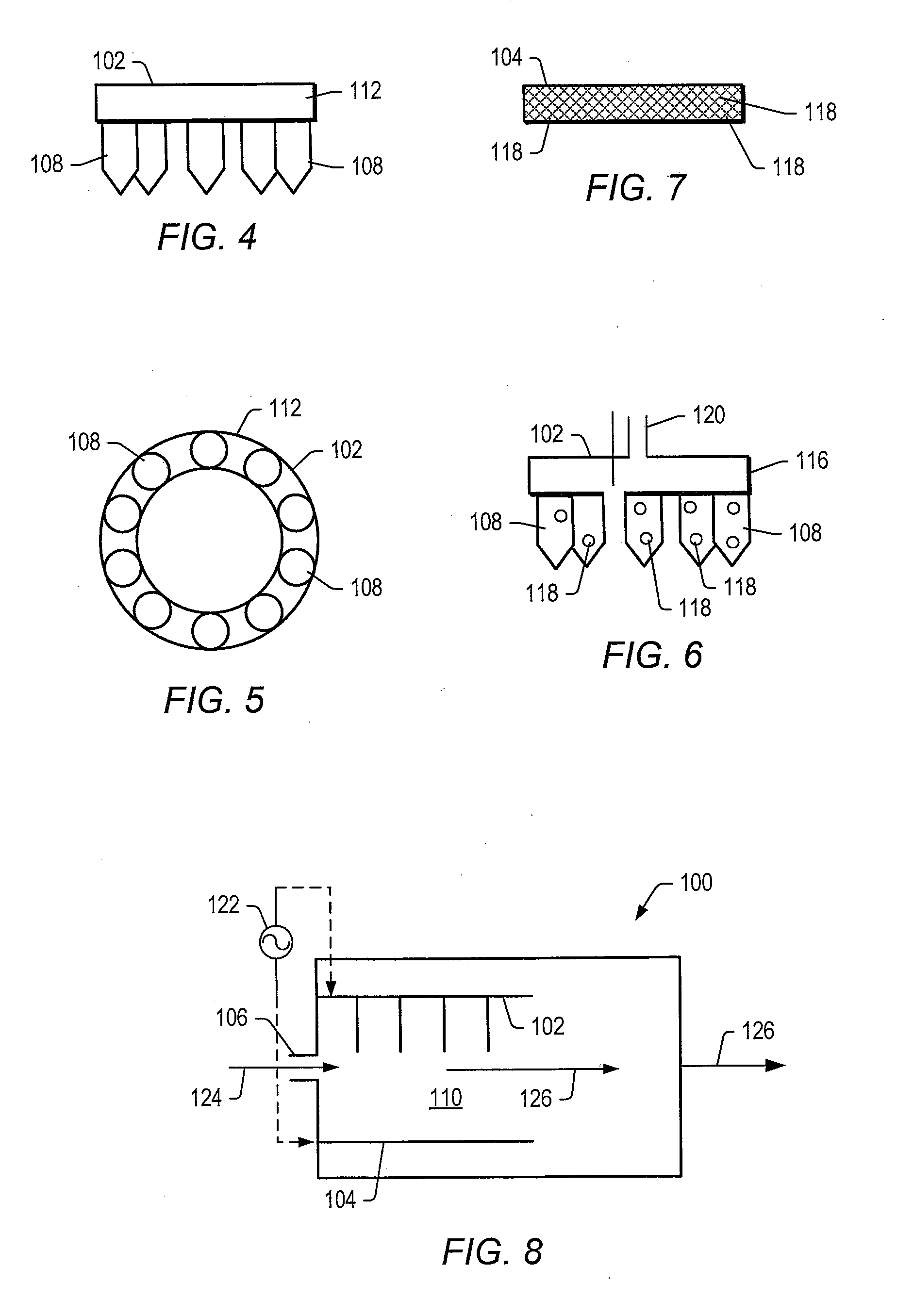Methods and systems of producing fuel for an internal combustion engine using a plasma system at various pressures
a technology of plasma system and fuel, which is applied in the direction of machines/engines, bulk chemical production, separation processes, etc., can solve the problem of not making steam reforming of hydrocarbons amenabl
- Summary
- Abstract
- Description
- Claims
- Application Information
AI Technical Summary
Benefits of technology
Problems solved by technology
Method used
Image
Examples
example
[0102]A tubular reactor was equipped with two vertically oriented electrodes with a ½ inch quartz tube (plasma generating zone) positioned between the electrodes. The cathode electrode (¼″ stainless steel tube) was positioned at the bottom of the tubular reactor. The cathode electrode included an opening to allow generated gas to leave the reactor. The anode electrodes (10 1 / 16″ inch stainless steel needles) were positioned at the top of the tubular reactor. The anode electrodes were connected to a pump that delivered aqueous ethanol into the plasma-generating zone. Anode electrodes were connected to a high voltage amplifier (Trek 20 / 20C) equipped with a pulse signal input (HP), and the cathode electrode was grounded. The gap between the anode and cathode electrodes was 15 mm. Temperature of the plasma in the gap was estimated to be between 260° C. and 280 ° C. using an IR digital temperature probe.
[0103]Catalysts listed in TABLE 1 were positioned next to the plasma zone. In certain...
example 2
[0107]The plasma reformer as described in Example 1 without catalyst was run at 5 psig and 10 psig. The results of at experimental conditions, various pressures, and products formed are listed in TABLE 3.
TABLE 3Experiment condition5 psig10 psigH2O / EtOH ratio3.243.24Feed rate (mmol / min)1.151.00Voltage RMS (kV)4.054.66Current RMS (mA)2.202.17Frequency (kHz)6.546.20Power RMS (W)2.973.51SummaryH2 + CO Productivity (sccm)139.2131.4H2 selectivity111% 120% CO selectivity82%87%CO2 selectivity 7% 7%HC selectivity11% 6%Reformer efficiency79%82%
Selectivity of COx=mole of product COx / (2×mole of converted ethanol)×100.
Selectivity of H2=mole of product H2 / (3×mole of converted ethanol)×100.
Converted ethanol was the total number of moles of ethanol in the following reactions:
C2H5OH+H20=2CO+4H2
C2H5OH+H2=2CH4+H2O
C2H5OH=C2Hx+H2O+yH2,
which was back calculated fro mole products CO, C2Hx and CH4. CO, C2Hx, and CH4 were determined using on line gas chromatography with absolute calibrations. The conversio...
PUM
| Property | Measurement | Unit |
|---|---|---|
| Temperature | aaaaa | aaaaa |
| Pressure | aaaaa | aaaaa |
| Pressure | aaaaa | aaaaa |
Abstract
Description
Claims
Application Information
 Login to View More
Login to View More - R&D
- Intellectual Property
- Life Sciences
- Materials
- Tech Scout
- Unparalleled Data Quality
- Higher Quality Content
- 60% Fewer Hallucinations
Browse by: Latest US Patents, China's latest patents, Technical Efficacy Thesaurus, Application Domain, Technology Topic, Popular Technical Reports.
© 2025 PatSnap. All rights reserved.Legal|Privacy policy|Modern Slavery Act Transparency Statement|Sitemap|About US| Contact US: help@patsnap.com



